Making the Case for Panoramic Wildlife Images
Panoramic crops are almost never used in wildlife photography, but they should be. By stripping away empty space and leaning into wide framing, panos can highlight motion, symmetry, and environment in ways a standard crop just can’t.
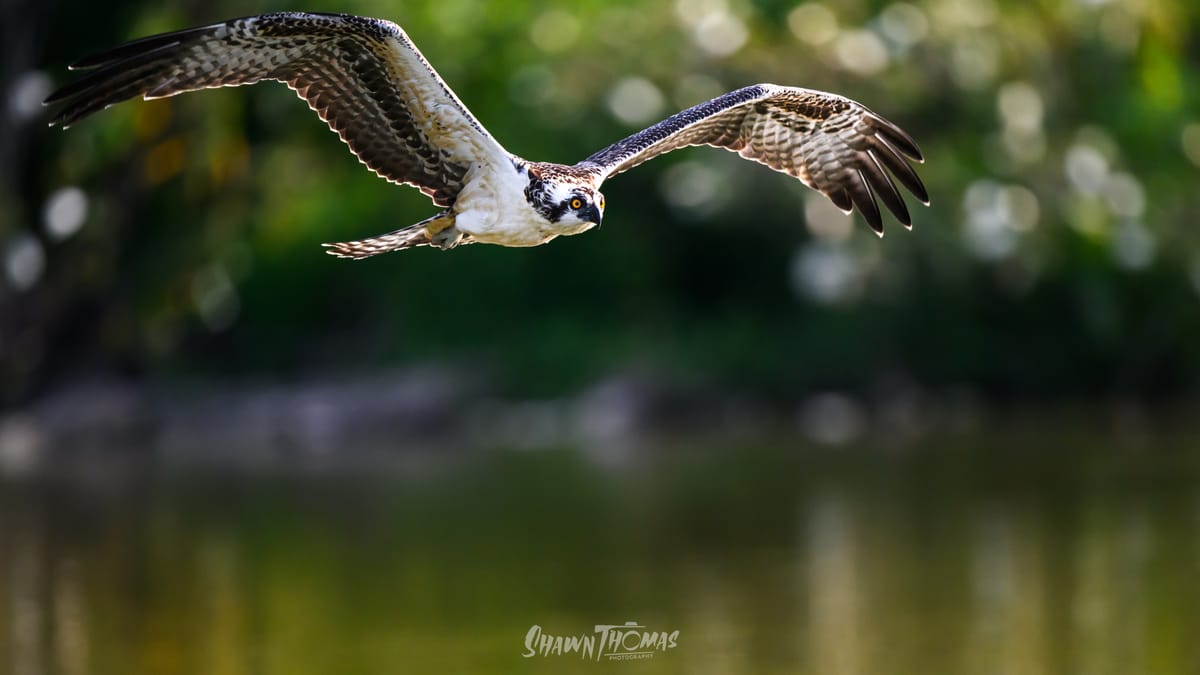
Today I want to talk about something that’s become much more near and dear to me lately, and that’s panoramic crops for wildlife images. First, I know I haven’t yet written a blog on cropping overall, but don’t worry, it’s coming. Cropping is probably the most important thing a wildlife photographer can learn.
The thing is, panos are a really underutilized format in wildlife photography. I think that’s a shame. They’re incredibly useful and the crop you choose says so much about the story you’re trying to tell. As sensors get more and more advanced, and pack in more and more megapixels, we have a lot more ability to cut unneeded details from our images. I’m not talking about stitched 1000 megapixel panoramas here. I’m talking about taking a single image straight out of the camera and cropping it into a pano format for stronger storytelling.
So I thought I’d share a few ways I’ve been leaning on panoramic framing and why I think it matters so much for wildlife even if it’s almost never used.
Movement and horizontal tension
A lot of wildlife photography is built around horizontal tension, how we simulate movement across a nearly flat plane. With waterbirds especially, so much of the frame above and below is just dead space.
Take these ducklings and their curiosity about a dragonfly. In a standard 3:2 crop you’d have sky and water that add nothing. Strip that away and the interaction itself becomes the star.
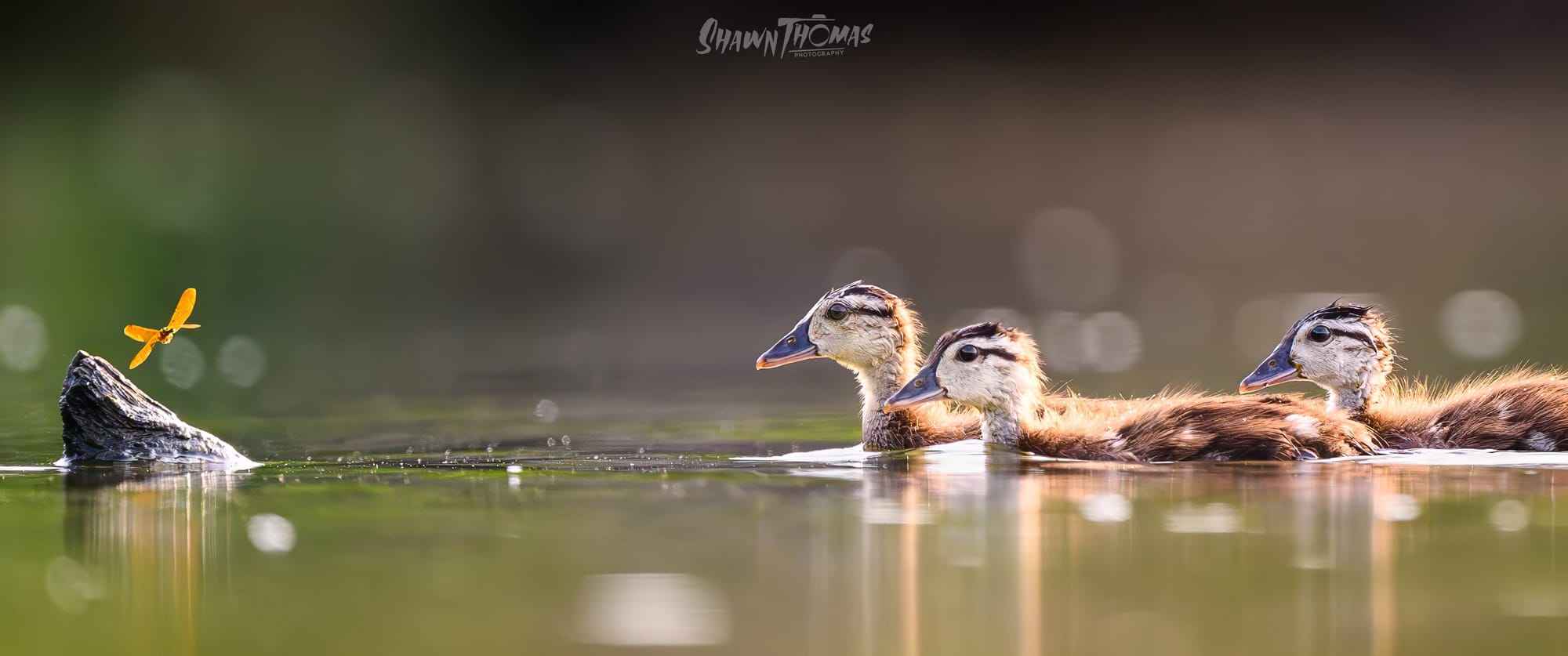
Same with this puffin taking off. If you want to show motion you have to leave space for the bird to move into, but in a standard frame that leaves you with huge amounts of top and bottom doing nothing. In a pano the eye goes straight where it should. This shot just won best in show in a local competition, and I got to print it big, because the pano category didn't have a size limit. This Puffin image also has a story of its own, that you can read about here.
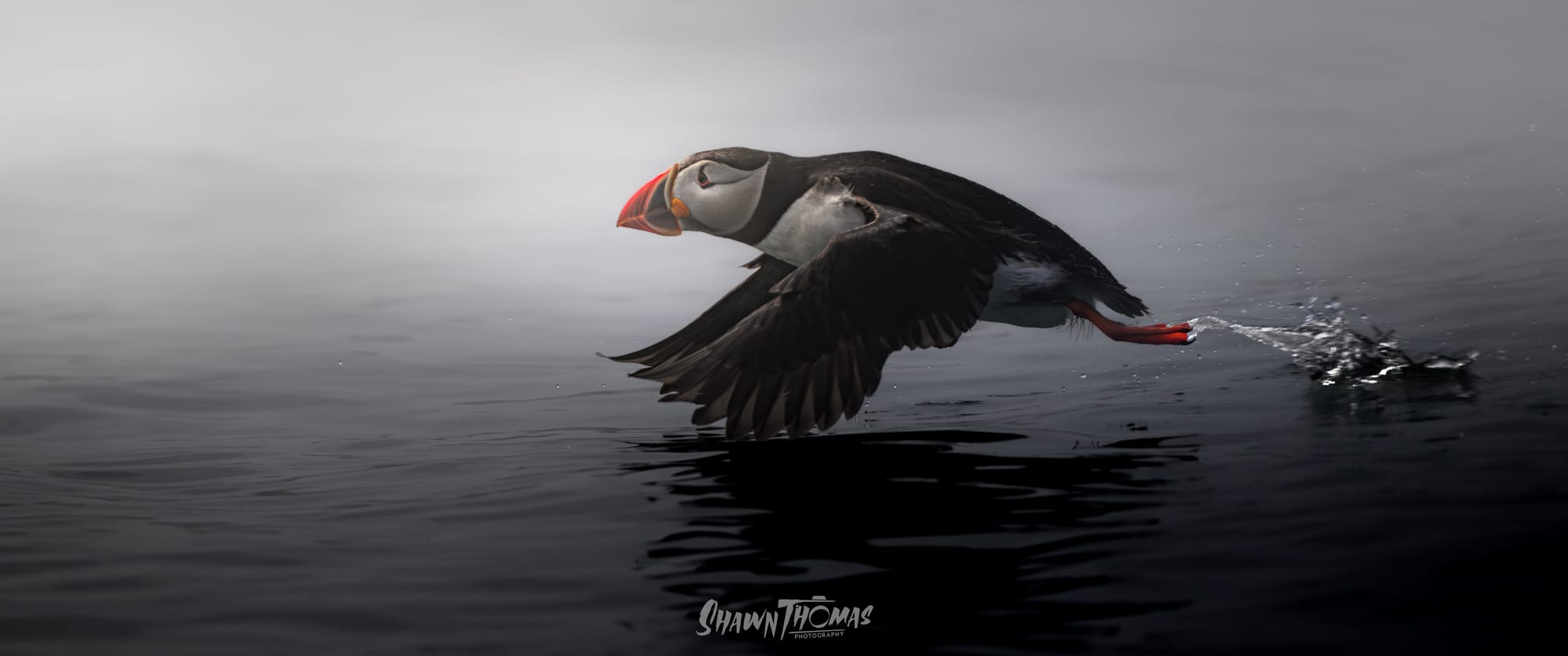
This merganser hitting the water is where I really started embracing panos. My wife loves this image, and I wanted the splash, but I didn’t want the bird jammed against the edge of the frame like I had in my original crop. Widening the crop gave me room to breathe and room for the story, without adding more of that distracting background top and bottom.
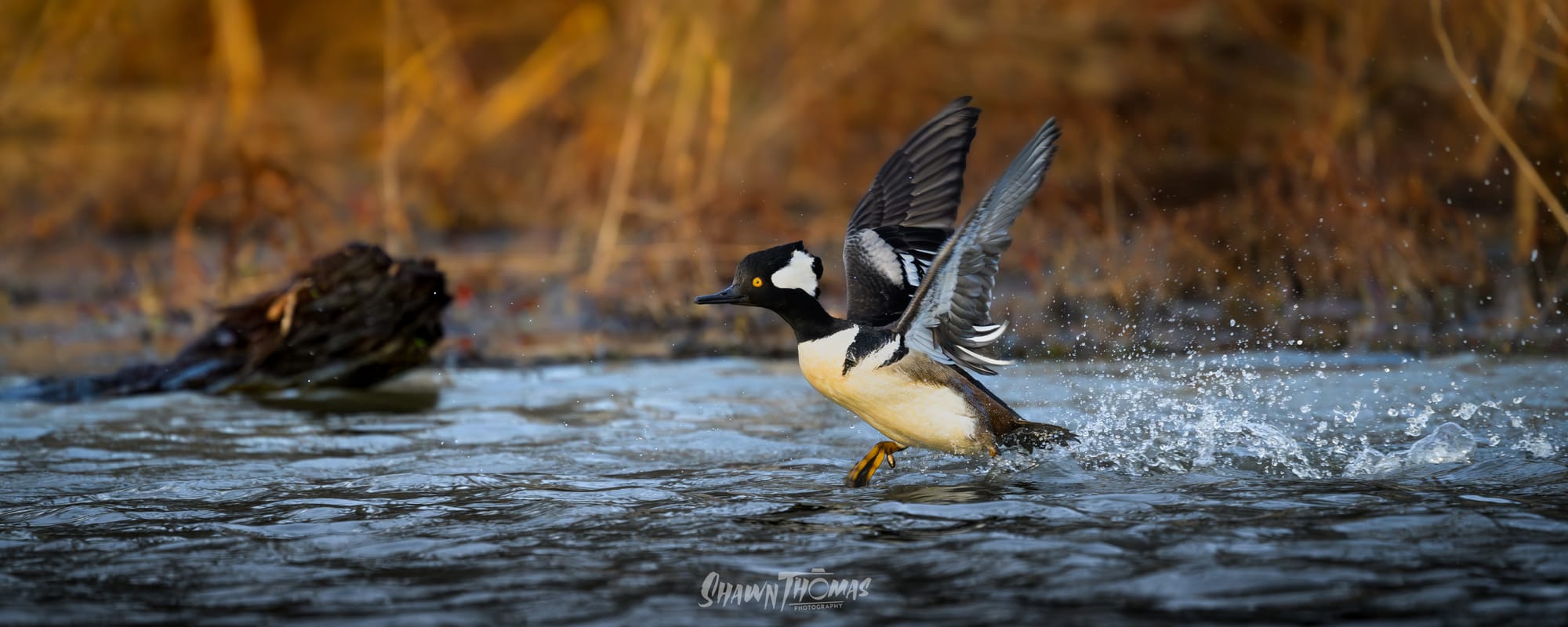
Symmetry and wingspan
Birds have inherently horizontal bodies. Long wingspans just don’t sit right inside 3:2 some of the time. Panos let you go tighter without feeling cramped.
This osprey head on was impossible to frame dynamically until I committed to a pano. Suddenly it felt balanced and intentional, almost architectural in the way the wings fill the frame.
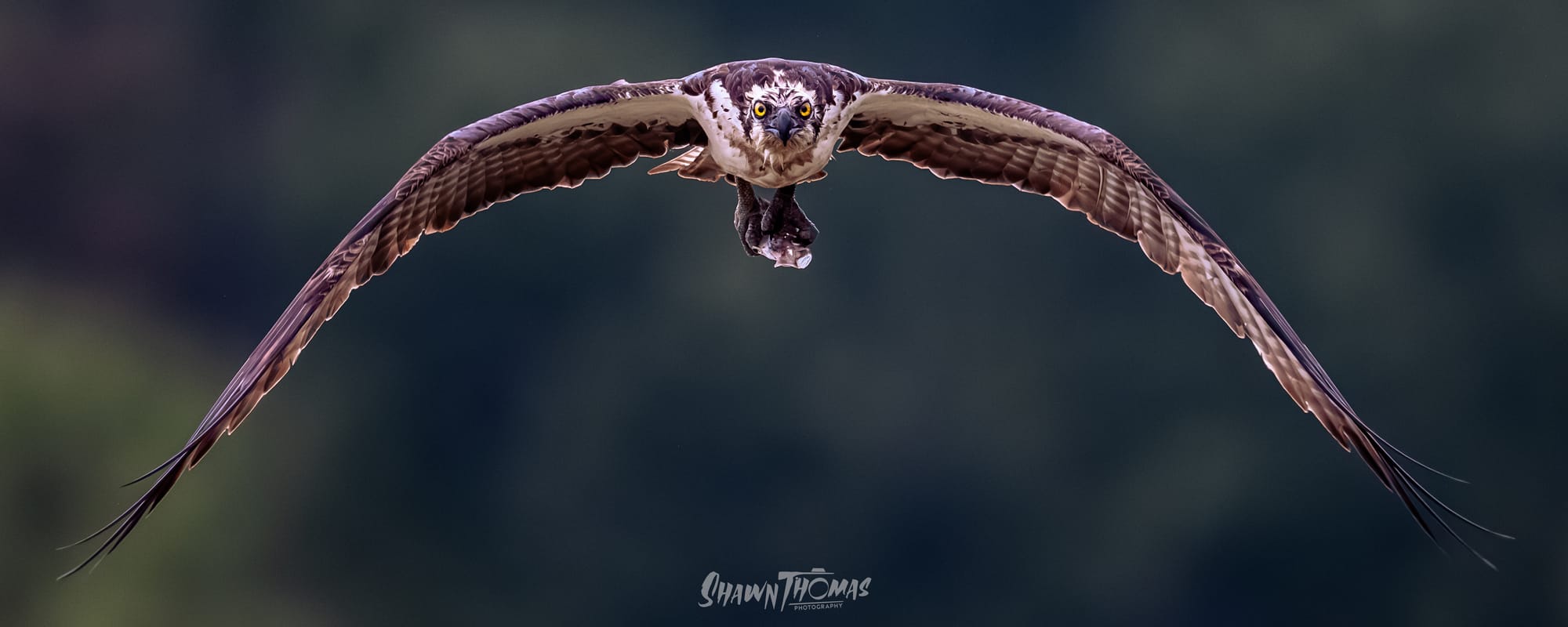
Same idea with this black skimmer. That long low wing line just begs to be a pano. Add in the skim and splash and there’s no wasted space anywhere. Especially when the front and back are just water, which is ultimately boring.
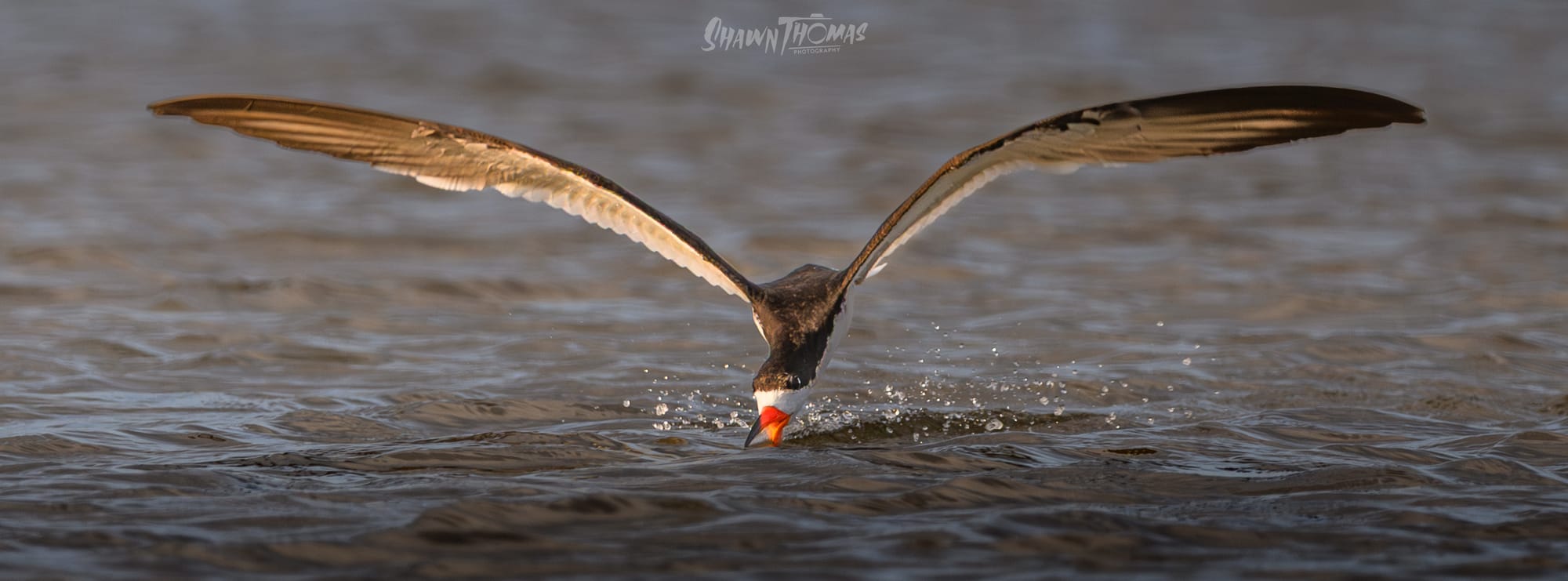
Environment and context
Sometimes it isn’t about trimming away. Sometimes it’s about giving the animal room to exist in its world. A landscape photographer’s instinct, but applied to wildlife.
This osprey perched on a branch works because the environment is allowed to stretch. The pano holds the scene together without the clutter of extra sky or foreground.
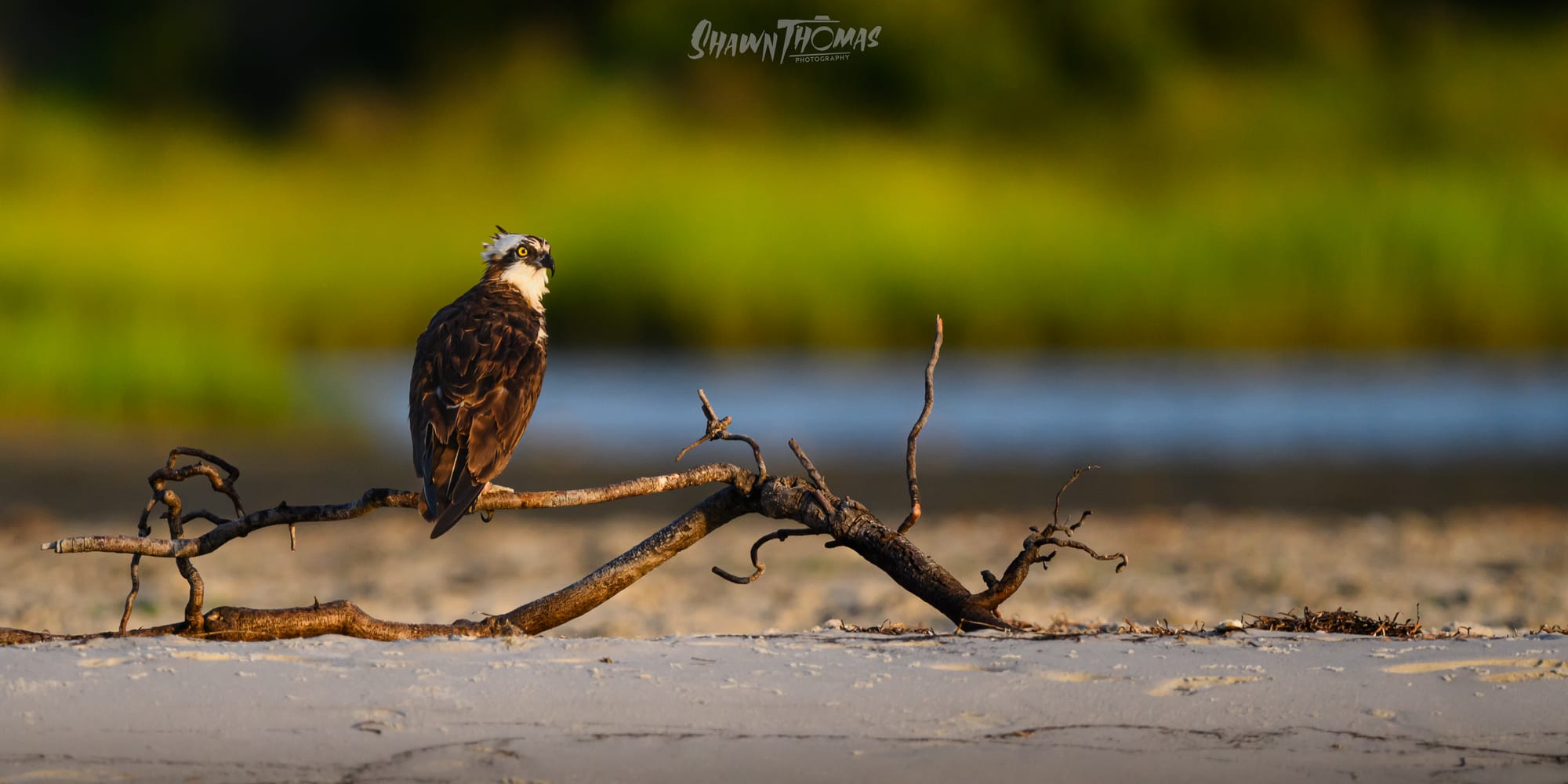
And then there are moments where the place is the whole point, like this flock of ibis cutting across a sky lit up at sunset. It’s not just about the birds, it’s about scale and movement and atmosphere.
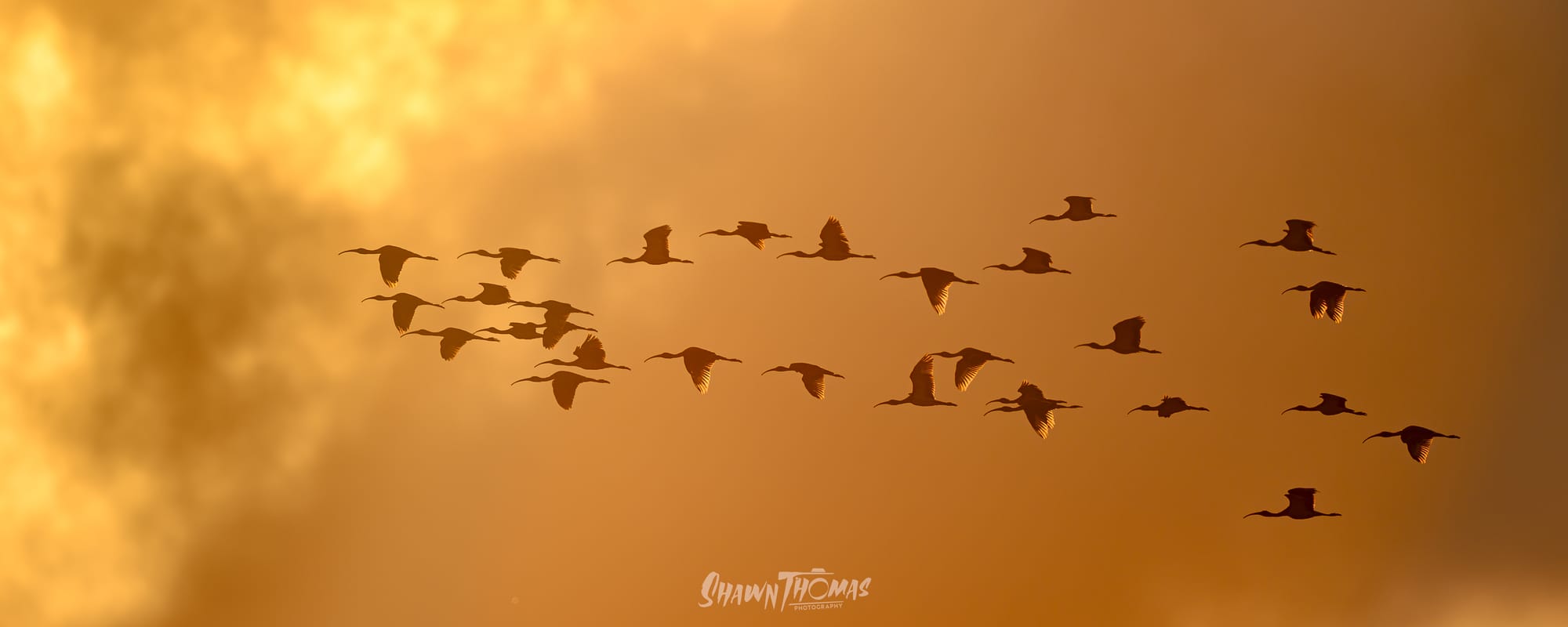
Or even this wild horse. I know, not a bird, shocking! Every once in awhile I take pictures of other animals too, and pano crops can make a quiet scene feel expansive.
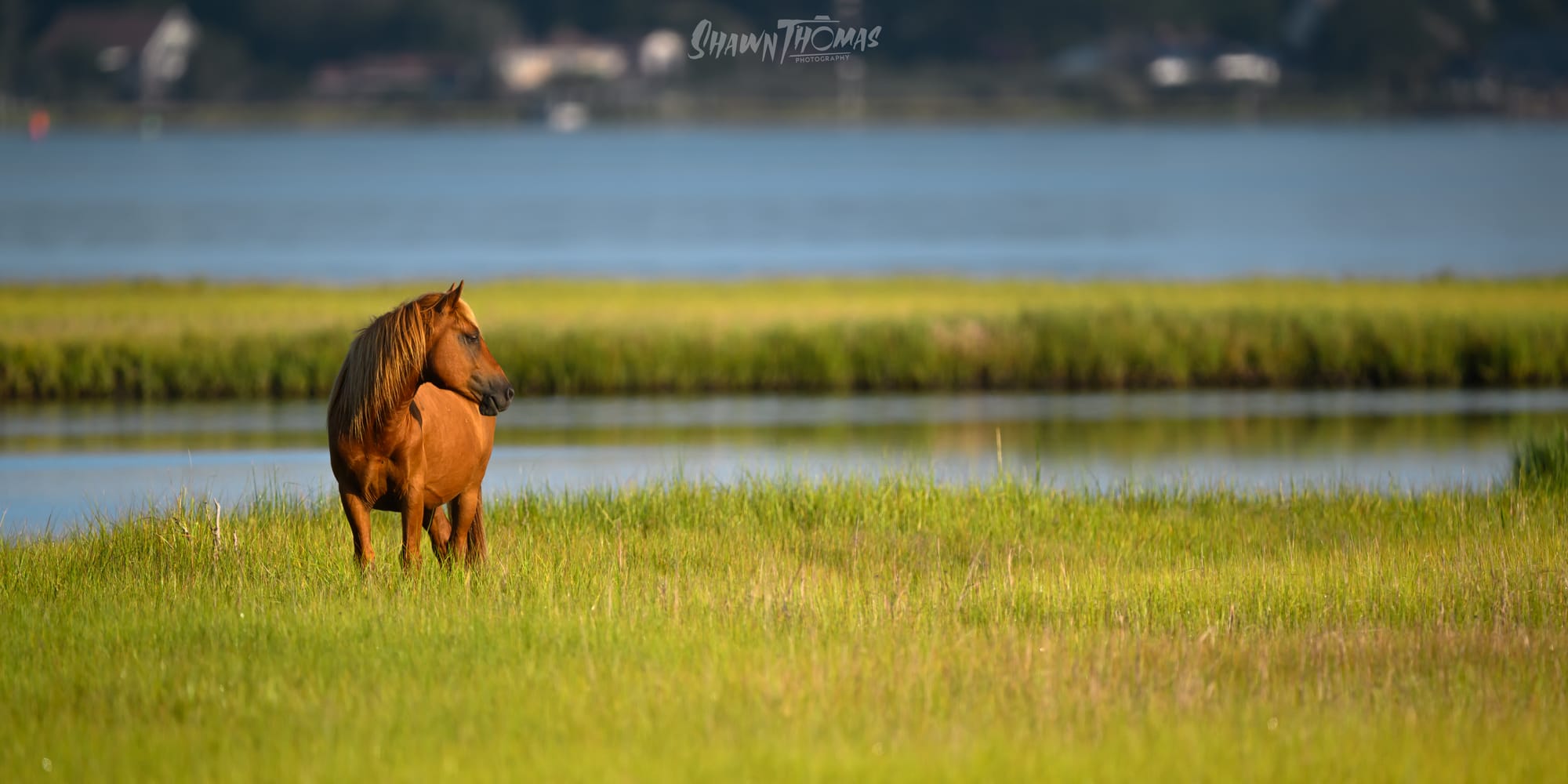
Closing thoughts
Panos aren’t just for stitched landscapes. They’re a tool, a way to cut distractions, highlight motion, frame symmetry, or give an animal its world. But you won’t find them in Lightroom’s default ratios or in a stack of precut mats. You have to choose them. You'll also grow to hate Instagram, since it doesn't support them. Yeah, that part really sucks.
For me, leaning into pano crops has opened up new ways of seeing. It’s forced me out of autopilot aspect ratios and into decisions that feel more deliberate. And yes, it makes printing a headache, buy a mat cutter if you go down this road, but it also makes images stronger.
So if you shoot wildlife, give panos a shot. Next time you’re staring at a frame that feels awkward, try slicing it wide. You might find the story was waiting there all along.
If you enjoyed this read you can check out all my work including the panos at www.shawnthomas.art
And hey! Why not subscribe? I post new blogs every Tuesday with tips, tricks, adventures, and lots of images!
